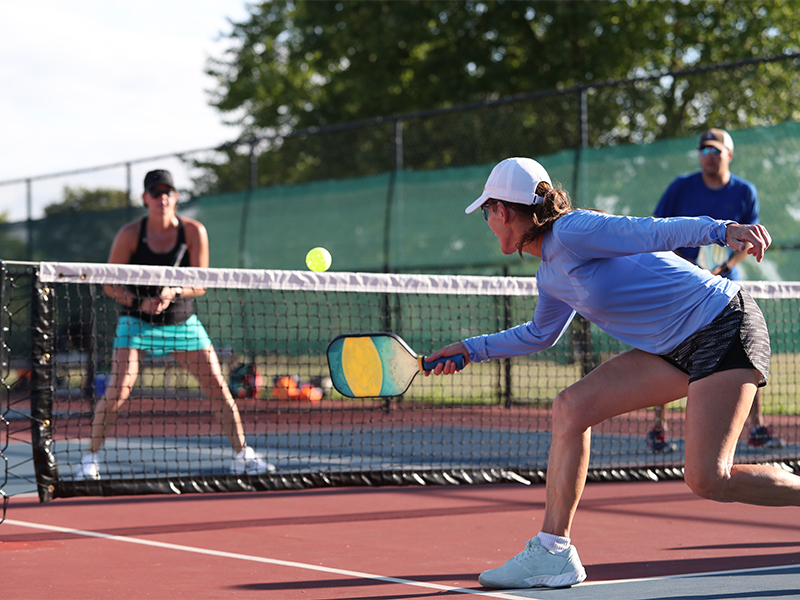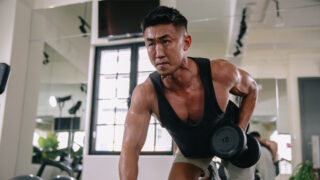Pickleball is a new sport in Singapore that’s become really popular. It’s lots of fun, but if your body is new to the pickleball court, you might be feeling the strain in a few places. Here, orthopaedic specialist surgeon DR KEVIN KOO gives advice on symptoms, causes and treatments for pickleball injuries.
Why do you think pickleball has become such a popular sport in Singapore?
While it’s been some time since I hit the pickleball court and played the sport, everyone who plays tells me that it’s easy to pick up, fun and relatively inexpensive. It’s also a great sport for the whole family, from kids to grandparents. It’s fantastic for overall cardiovascular and mental health.

What type of pickleball injuries do you see in your clinic?
In the grand scheme of things, pickleball is a relatively low-impact sport. But, as with any physical activity, injuries can still happen. The main types of pickleball injuries I see are in the upper and lower limbs. Common shoulder problems usually involve the rotator cuff tendons which stabilise the shoulder joint. These can undergo inflammation, otherwise known as tendinitis. In more severe cases the tendons can also be torn.
Unsurprisingly, tennis elbow is common due to repetitive swinging motion. I also see wrist sprains due to over extension, and in some patients, wrist and hand fractures following a fall on the pickleball court.
In the knees, I see injuries resulting from sudden changes of direction and twisting movements. These include meniscus tears and patellar tendinitis – the inflammation of the tendon connecting the kneecap and shinbone. And ankle strains and sprains are unfortunately par for the course.
How do we know when it’s time to see an orthopaedic specialist?
The majority of pickleball injuries can easily be resolved at home using the RICE method (rest, ice, compression and elevation). It’s key to do this for the first 48 hours. If the pain is persistent, not getting better (or worsening) despite rest, there’s excessive swelling, numbness or tingling and/or you’re unable to weight-bear, it’s time to consult a doctor! There might be a more serious injury like a fracture, dislocation, severe ligament tear or nerve injury requiring proper diagnosis and treatment. After a full consultation, I can better evaluate the appropriate exploratory tests to use like MRI, X-ray, ultrasound or CT scan.

What are the treatment options available for this sport in Singapore?
Treatment will depend on an the individual diagnosis, but in general we usually start conservatively. A course of anti inflammatories and supplements such as collagen may be prescribed. An orthotic brace can also be helpful to support the injured area, along with sessions with a physio. If the injury does not resolve, then more intensive treatment may be required by an orthopaedic specialist like platelet-rich plasma or steroid injections. Shockwave treatment (Extracorporeal Shock Wave Therapy, ESWT) has shown positive results with the use of acoustic waves to stimulate healing and improve blood flow to the injured tissues. Surgery is sometimes required for more acute injuries like complex tears or broken and displaced bones.
Are there any preventative measures we can take to avoid pickleball injuries?
Doing a thorough warm-up and cool-down really helps to get and keep your body in good shape for exercise. Using proper technique and equipment while playing including good supportive shoes softens the impact. And, last but not least, listen to your body! If you feel pain, stop and take a rest. Then you can stay active for longer.
About the doctor
Dr Kevin Koo is a senior consultant orthopaedic surgeon who treats sports injuries and general orthopaedic conditions. He’s the founder of The Bone & Joint Centre, where he provides personalised treatments and orthopaedic surgeries to all parts of the body.
#14-15 Mount Elizabeth Medical Centre, 3 Mount Elizabeth
9898 7781 | bjc.sg
This article first appeared in the August 2024 edition of Expat Living. You can purchase the latest issue or subscribe so you never miss a copy!
To make the most of living in Singapore, read our latest City Guide here for free!
Don't miss out on the latest events, news and
competitions by signing up to our newsletter!
By signing up, you'll receive our weekly newsletter and offers which you can update or unsubscribe to anytime.



